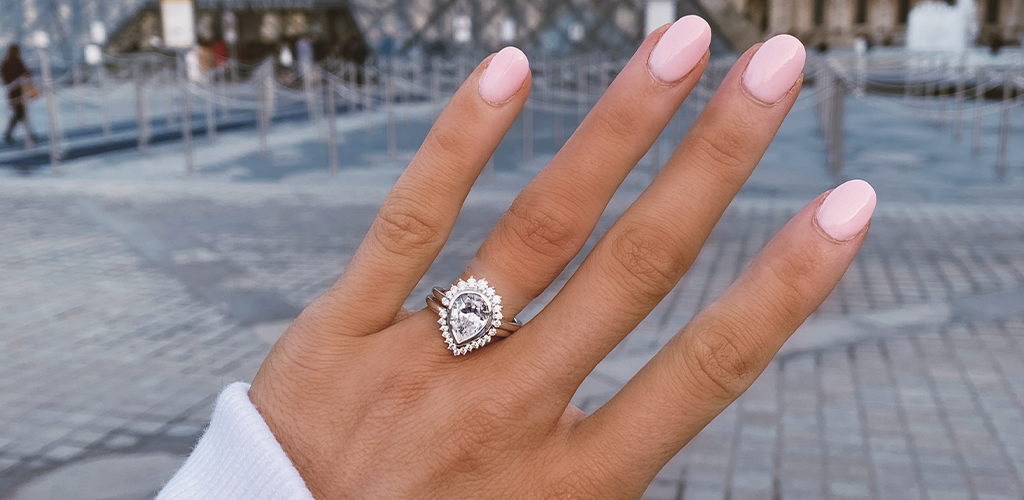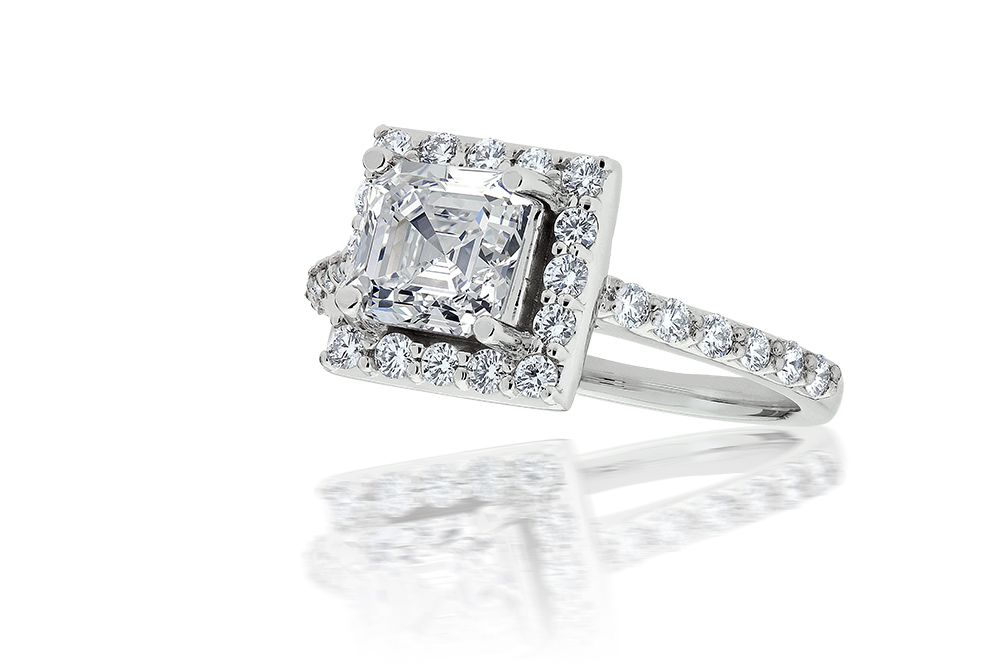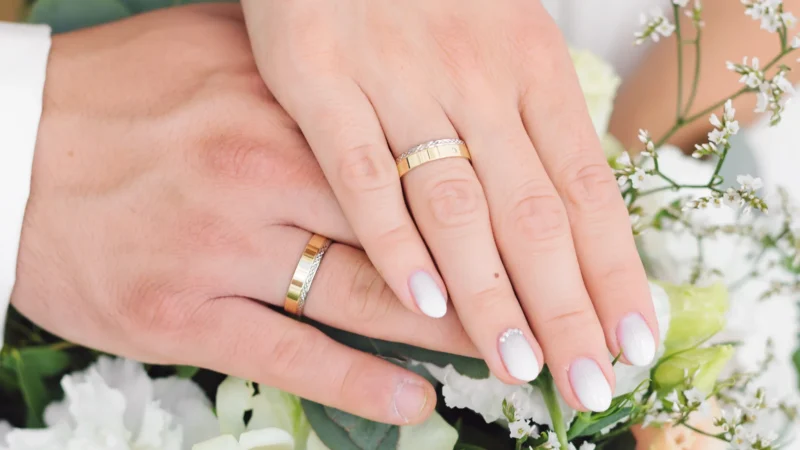For centuries, the choice of engagement ring finger has had a deep cultural significance. From its origins in ancient Egypt and Rome to modern-day wedding ceremonies, the custom of wearing an engagement or wedding band on the left-hand ring finger has come to signify a promise between two people.
While this tradition is largely accepted today, understanding why certain fingers were chosen as symbols can help us appreciate this small but meaningful detail even more. In this article, we will explore how different cultures have interpreted and used these rings over time, providing insight into their symbolic value and our relationship with them today.
Exploring the Cultural Significance of Engagement Rings

Engagement rings are an essential part of any wedding ceremony, representing a union and commitment between two people. As such, engagement ring finger choices play an important role in understanding the cultural significance behind why people wear them.
Different cultures have different beliefs when it comes to choosing which finger should be adorned with a ring; some believe that each hand symbolizes something specific, while others may not put much emphasis on the choice at all. In addition to this, there are numerous customs surrounding how the engagement ring is presented—for example, in some countries it’s traditional for the bride-to-be’s parents to make the first move towards presenting their daughter with her engagement ring.
Traditions aside, many couples today choose to personalize their engagement rings by selecting unique designs or engravings that reflect their shared interests or passions as well as symbolic elements like family heirlooms or birthstones. Through this act of self-expression, couples can create a truly meaningful piece of jewelry that will remain cherished forever – even if its exact meaning may only be known to them! Furthermore, wearing an engagement ring on your chosen finger serves as a reminder and visible signifier of your love and commitment for years after you exchange vows.
Overall, exploring the cultural significance of engagement ring finger choices offers insight into generations past while also giving way for modern couples to express themselves through this timeless tradition. Each couple’s story is unique yet universally connected by one thing: The power of love!
A Historical Perspective on Engagement Ring Fingers

Tracing back to ancient times, engagement rings have been an important symbol of commitment and love. Ancient Egyptians are believed to be the first culture to wear rings on their left ring finger as a sign of betrothal.
In those days, it was believed that a special vein in this finger ran directly to the heart – known as “vena amoris” or the vein of love. This belief spread throughout Europe and eventually became part of our modern cultural tradition.
Romans also placed great importance on engagement ring fingers, believing that Jupiter’s thunderbolt would provide them with power if they wore rings on their left hand. The early Christians then adopted this practice since they saw marriage as a representation of Christ’s relationship with his church.
During the Middle Ages, Europeans were encouraged to wear two rings; one for betrothal and another for marriage ceremonies which were worn on both hands but mainly focused around the fourth finger of their left hand due to their connection with romance and spirituality. Today, many cultures still follow traditional customs when selecting an appropriate engagement ring finger such as wearing two different wedding bands or combining gemstones from both sides into one intricate piece.
While some couples opt for more progressive methods like tattooing each other’s names instead of exchanging jewelry altogether – no matter what choice is made – there will always remain something special about placing your trust in someone else by slipping a band onto your fourth finger!
Analyzing Social and Religious Influences on Engagement Ring Traditions

The cultural significance of engagement ring finger choices is closely intertwined with social and religious influences. In many cultures, the fourth finger on the left hand is associated with a special connection to one’s heart, as it was believed that this particular finger held a vein that connected directly to the heart.
This romantic notion has been linked back thousands of years ago when ancient Egyptians declared that wedding rings were symbols of eternal love. Similarly, in some religions such as Judaism and Christianity, marriages are viewed as sacred unions between two partners for life. As a result of these beliefs, couples often choose an engagement ring to be worn on the fourth finger as an outward symbolization of their commitment and dedication to each other’s hearts.
Beyond social and religious influences, however, there are also more modern elements at play when deciding where an engagement ring should go. For example, in Western societies today there is much greater freedom for people to express themselves through fashion and jewelry trends; thus couples may opt for different fingers or even both hands if they wish! Ultimately though no matter which choice is made – whether based on tradition or personal preference – wearing an engagement ring remains a significant part of expressing love throughout all cultures around the world!
Popularity and Variations of Engagement Ring Finger Choices

The popularity and variety of engagement ring finger choices are a testament to the cultural significance associated with this symbol of love and commitment. While traditionally most people will opt for the fourth finger on their left hand, some variations may be preferred depending on location or religion.
In many parts of Europe, for example, it is customary to wear an engagement ring on the right hand. Similarly, in countries such as India and Nepal where Hindu weddings take place, couples may choose to wear their rings on either the third or fourth fingers of both hands instead.
In addition to geographical influences, certain religions also affect which finger is chosen for wearing an engagement ring. Jewish tradition dictates that brides-to-be should wear a diamond or plain gold band on the middle finger of their right hand while Muslim couples often prefer selecting one of four fingers – typically either the index or middle fingers – when making their choice.
While there has always been debate about which finger an engaged couple should choose to show off their token of love and devotion, ultimately it comes down to personal preference; whichever option suits them best! From variations based on geography and religion to unique decisions made by individual couples – no two engagements are alike!
Conclusion

Engagement ring finger choices are an important part of any couple’s wedding experience, as they symbolize the commitment between two people. It is a cultural tradition that has been around for centuries and continues to be celebrated today in many cultures across the world.
While some couples may choose to stick with traditional engagement ring finger choices, others will opt for something more modern or unique. No matter what finger you choose to wear your engagement ring on, it is sure to hold great significance and be a wonderful reminder of your connection forever.
If youre looking for a special piece of jewellery that marks this special moment in time, you might want to visit Engagement Rings Manchester – they have a wide selection of beautiful rings that are perfect for making this memorable occasion even more meaningful.


